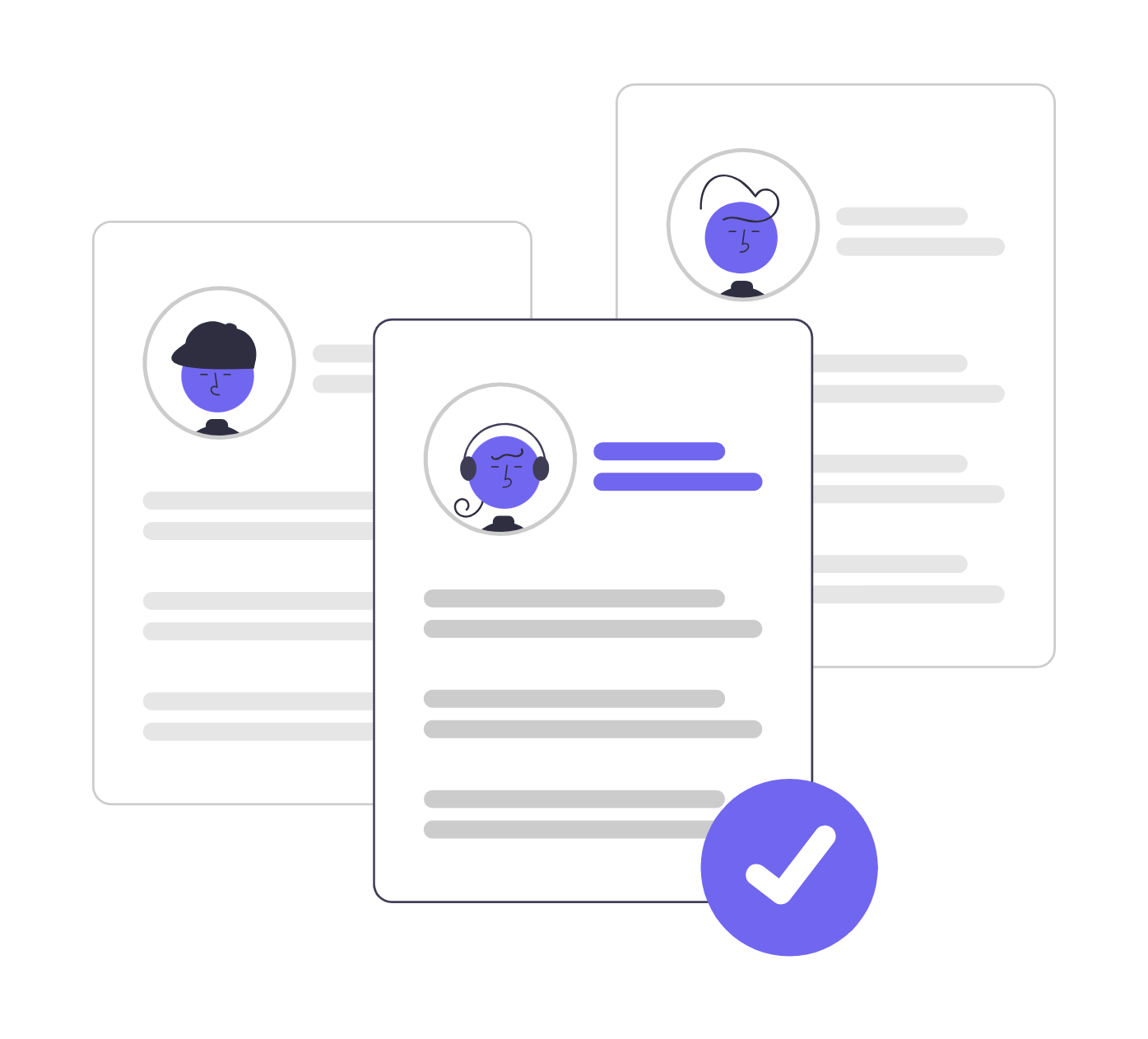Share
Rethinking Where Recruiters Sit—and Why It Affects Speed, Quality, and Accountability
Introduction: Why Org Charts Might Be Holding Your Hiring Team Back
Ask any in-house recruiter who they report to, and chances are it’s someone in HR. That’s been the traditional model for decades: recruiters are grouped under the HR umbrella, treated as part of the larger “people team.”
But is that structure actually serving the business—or holding it back?
More and more recruiters—and hiring leaders—are questioning whether the standard HR-recruiter setup still makes sense in today’s hiring climate. Because while HR and recruitment are both people functions, they operate at very different speeds, with very different goals.
This post unpacks the structural tension between HR and recruiting, and why the question “Should recruiters report to HR?” is more than just an org chart decision—it’s a strategic one.
1. Recruiters and HR: Two Very Different Jobs
Let’s start by clarifying the roles.
HR professionals are responsible for the internal employee experience:
- Compensation and benefits
- Employee relations
- Legal compliance
- Performance management
- Training and retention
Recruiters, on the other hand, are outward-facing. Their job is to:
- Source and attract talent
- Screen and qualify candidates
- Coordinate interviews
- Close candidates
- Deliver high-quality hires quickly
In short:
HR manages employees. Recruiters attract them.
And yet, recruiters are often managed by people who don’t specialize in hiring—and don’t always understand the urgency or fluidity of modern recruitment.
Quickly identify your most promising candidates. WorkScreen automatically evaluates, scores, and ranks applicants on a performance-based leaderboard—making it easy to spot top talent, save time, and make smarter, data-driven hiring decisions.

2. Why Many Recruiters Struggle Under HR Leadership
Recruiters frequently share frustrations about working under HR—particularly when leadership doesn’t understand the day-to-day dynamics of recruiting.
In a widely discussed Reddit thread, several in-house recruiters vented about:
- Delays caused by unnecessary approvals
- Hiring managers losing top candidates due to slow processes
- Being asked to follow policies that don’t align with hiring urgency
- Feeling micromanaged by HR professionals who lack recruitment expertise
Here’s how one experienced recruiter put it:
“I’ve been in situations where HR’s involvement extended the hiring process unnecessarily. They bring value on job descriptions and salary ranges—but beyond that, they often get in the way.”
In high-stakes hiring environments, those delays can cost a company its best candidates—and recruiters their motivation.
3. What Recruiters Need to Do Their Best Work
To attract and land top talent, recruiters need:
- Speed: the ability to move quickly through sourcing, interviewing, and offers
- Autonomy: freedom to adapt based on candidate feedback or market shifts
- Clear alignment with hiring managers—not just HR protocols
- Access to modern tools that optimize outreach, screening, and candidate communication
Recruiters also thrive on performance metrics—like time-to-hire, offer acceptance rate, and pipeline conversion—metrics that don’t always get prioritized in traditional HR structures.
Easily administer one-click skill tests with Workscreen-This way you can assess candidates based on real-world ability—not just credentials like résumés and past experience. This helps you hire more confidently and holistically.

4. Why Separating Recruiters from HR Can Drive Better Outcomes
Many high-growth companies are choosing to move recruiters out from under HR—and they’re seeing stronger results.
When recruiters report directly to operations, business leadership, or a standalone talent function, it leads to:
- Faster decision-making
- Tighter alignment with hiring goals
- Greater accountability for hiring outcomes
- Increased clarity around ownership and priorities
Recruiters become strategic partners—not administrative assistants.
This shift doesn’t mean cutting HR out of the process—it simply means giving recruiters the authority and visibility they need to deliver results.
5. Collaboration Still Matters—But So Does Boundaried Ownership
It’s important to be clear: separating recruiters from HR doesn’t mean ending collaboration.
In fact, the best hiring environments are built on strong partnerships between the two teams:
- HR brings structure, salary benchmarks, and compliance safeguards
- Recruiters bring market insights, candidate experience, and speed
What doesn’t work? When recruiters have to run every decision past HR—especially when it delays hires or creates unnecessary friction.
The solution isn’t hierarchy. It’s defined ownership with shared goals.
Workscreen Eliminates low-effort applicants—including those who use AI Tools to apply, copy-paste answers, or rely on "one-click apply." This way, you focus only on genuine, committed, and high-quality candidates—helping you avoid costly hiring mistakes.

6. For Small Teams: How to Make a Blended Model Work
Not every company can afford separate HR and recruiting departments—especially startups or lean teams.
In that case, here’s how to avoid the common pitfalls:
- Make responsibilities explicit: Even if one person handles both, block out time for recruiting-specific tasks.
- Invest in tooling: Automate screening and communication to reduce manual workload.
- Monitor for overload: If hiring starts to suffer or HR tasks get neglected, it’s time to split roles.
Trying to do everything in one seat might work early on—but it’s rarely sustainable at scale.
Conclusion: Rethinking Recruiter Reporting Is a Strategic Move—Not a Cosmetic One
Recruiters aren’t just mini-HR reps—they’re the front line of your employer brand and the engine behind your team’s growth.
Treating them as an afterthought under HR often leads to:
- Slower time-to-hire
- Weaker candidate pipelines
- Burnt-out recruiters with little ownership
If hiring is critical to your business success, structure your team to reflect that reality.
Give recruiters autonomy. Treat hiring as a strategic function. And design your org chart to win—not just to conform.
FAQ
A: The core function of Human Resources (HR) is to manage the employee lifecycle—from hiring and onboarding to development, retention, and exit. HR ensures compliance, supports company culture, manages payroll and benefits, and handles employee relations.
A: In some companies, especially fast-growing startups or tech firms, recruitment may operate as a standalone function—often reporting directly to founders or department heads. However, it usually still aligns closely with HR goals and policies.
A: To improve hiring efficiency and focus. Separating recruitment from HR allows specialized teams to optimize the hiring process, use data-driven tools, and respond faster to hiring needs—especially in competitive industries.
A: Onboarding is typically a shared responsibility. Recruiters handle pre-boarding steps like offer letters and introductions, while HR manages the formal onboarding process, including paperwork, orientation, and benefits enrollment.

